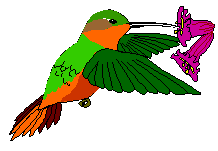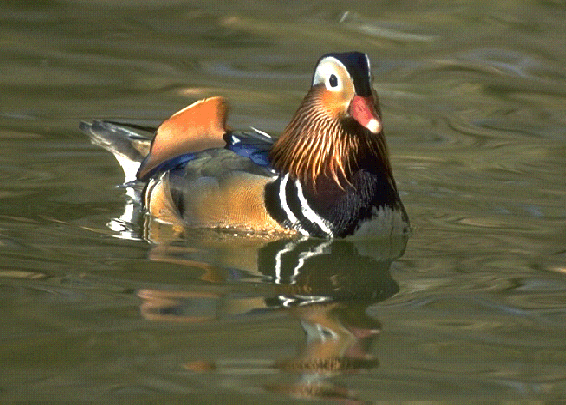


Ornithology is the biology of birds. Today knowledge of avian life histories and populations is more complete than that of most other classes of animals.
Birds have been central to work on molecular analyses of phylogeny. Perhaps the greatest contribution of bird studies has been to population and community ecology, but their contribution to evolutionary ecology and to the discovery of new connections between animal behavior and ecology is not far behind. Birds are particularly well suited for the study of mating systems and strategies. They are similarly useful in investigation of the roles of kinship in evolution and of altruism.

For more information about ornithology.

The bird population is very diverse and unique. There are many different types of birds and many more different species of birds present in our world.
![[*]](redstar.gif) TOKYO, JAPAN
TOKYO, JAPAN![[*]](redstar.gif) IN OTHER COUNTRIES
IN OTHER COUNTRIES![[*]](redstar.gif) ZOO BIRDS
ZOO BIRDS![[*]](redstar.gif) SKETCHES
SKETCHES![[*]](redstar.gif) Gopher Menu of more birds in alphabetical order
Gopher Menu of more birds in alphabetical order



![[*]](whopcrn.gif) Crane, Whooping (FWS)
Crane, Whooping (FWS)
![[*]](eagle-1.gif) Eagle, Bald
Eagle, Bald![[*]](falcon.gif) Falcon, Peregrine (NWRS--News Release)(FWS)
Falcon, Peregrine (NWRS--News Release)(FWS)
![[*]](owl.gif) Pygmy-owl,
Cactus Ferruginous (Click here for more owls)
Pygmy-owl,
Cactus Ferruginous (Click here for more owls)
![[*]](peli.gif) Pelican, Brown (FWS)
Pelican, Brown (FWS)
![[*]](peng.gif) Penguins (SW/BG)
Penguins (SW/BG)
![[*]](wdpeck.gif) Woodpecker,
Red-cockaded
Woodpecker,
Red-cockaded
Many countries including the United States have established refuge for these endangered birds.

 Search places on the Net
Search places on the Net
![[*]](yeldot.gif) World Wide Web W3
World Wide Web W3![[*]](yeldot.gif) Gopher Servers Worldwide
Gopher Servers Worldwide![[*]](yeldot.gif) Veronica Searches of Gopherspace
Veronica Searches of Gopherspace![[*]](yeldot.gif) Archie Searches of FTP Sites
Archie Searches of FTP Sites ![[*]](yeldot.gif) WAIS Based Information
WAIS Based Information ![[*]](yeldot.gif) Popular FTP Sites via Gopher
Popular FTP Sites via Gopher

 Bird Watching
Bird Watching

![[*]](grndot.gif) CSULA Library (login as Library) and Melvyl (you will need to identify your terminal) for books.
CSULA Library (login as Library) and Melvyl (you will need to identify your terminal) for books.
![[*]](grndot.gif) CARL (you will need to identify your terminal) for articles.
CARL (you will need to identify your terminal) for articles.![[*]](grndot.gif) Books
Books![[*]](grndot.gif) Booksellers.
Booksellers.



 Contact Us
Contact UsIf you are an educator who is using our NEXTSTEP or virtual applications in the classroom, we would especially like to hear from you. Let us know what you are doing and how it is working out. Continued support for this project will depend on its impact in science education.
If you are an educator who is interested in making use of our NEXTSTEP or virtual applications, please let us know how we can help.
 Return to the Electronic Desktop Project home page
Return to the Electronic Desktop Project home page
![]() Check out the WWW Virtual Application Catalog from the EDP
Check out the WWW Virtual Application Catalog from the EDP
 Check out the NEXTSTEP Application Catalog from the EDP
Check out the NEXTSTEP Application Catalog from the EDP
 Visit the home page for California State University, Los Angeles
Visit the home page for California State University, Los Angeles